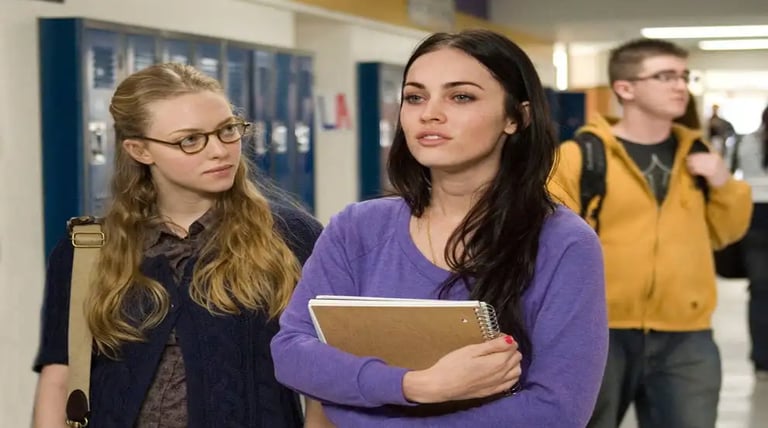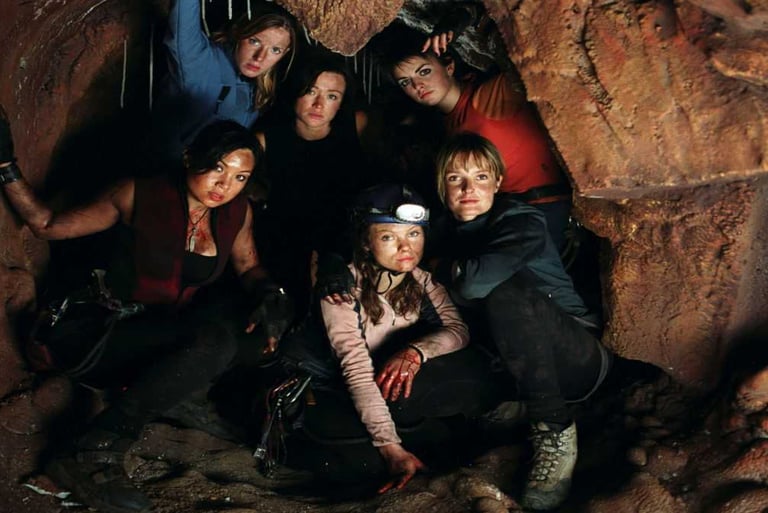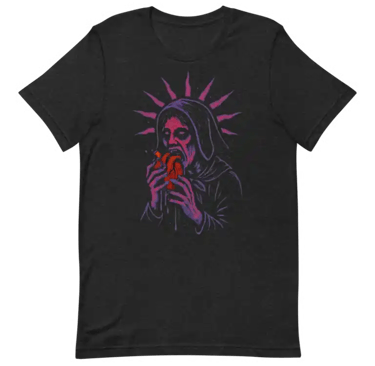Female Friendship in Horror
Explore how female friendship in horror breaks traditional molds, moving beyond isolation and rivalry to create rich, emotional narratives. Discover the power of women supporting each other in terrifying situations and the depth it adds to the genre.
FACES AND HELLSCAPES
Stephanie Botticelli
11/3/20253 min read


Horror often thrives on loneliness. It traps its characters in empty houses, foggy woods, or their own haunted minds. My question is, instead of isolating women, we let them face the dark together? Female friendship in horror opens emotional and narrative territory that’s as rich as it can be terrifying.
Traditionally, women in horror have filled familiar molds—the victim, the final girl (which I love), the witch or the object of desire. These archetypes often isolate women or pit them against each other, leaving little space for deep (non-romantic) relationships. I’ve been re-drafting a novella recently, where two females are at the heart of a survive-the-night creature feature. Looking back and re-editing the relationship between these two characters are what drove me to write this post. It feels like writing female friendship within the horror is bucking a bit against the formula. It creates this emotional realism within a genre that thrives on exaggeration. It’s showing me that this connection can drive the story just as powerfully as their survival.
In horror, isolation is a weapon. So is mistrust. Female friendship almost feels like a form of rebellion—an act of resistance against the fear itself. When you have two women trusting each other, protecting one another or refusing to abandon each other in the face of something monstrous you’re challenging both horror conventions and patriarchal expectations. Think of The Descent, where the bonds between women are both empowering and tragic (also horrific). In Jennifer’s Body, friendship becomes possession, obsession, and revenge all at once. These relationships aren’t soft; they’re dangerous, transformative, and deeply human.
Romantic love is intense; that's an expectation. Friendship can be more intimate and more fragile. That’s why I think it’s fertile ground for horror. The emotional stakes of losing a best friend, of watching someone you love become something unrecognizable, can be more horrifying than a physical threat. In my own writing, I use these moments—the hesitation before saving someone, the guilt that lingers after betrayal—to magnify dread. The horror isn’t just external; it’s woven into the trust that once held two people tightly together.
A close friendship can be a sanctuary, but in horror, no space stays safe for long. When the friendship itself becomes haunted (by secrets, shared trauma or supernatural interference) the result can be amazing. Imagine one friend protecting the other from something outside, only to realize the danger is her. Or a bond so strong, nothing can break it, no matter how monstrous or heinous the other becomes. Friendship can be both a shield and a snare. I feel like writing that friendship revitalizes hope in a horror story. Writing friendships as a survival tool lets us explore courage through a different lens. Loyalty and empathy can be as powerful as weapons or strategy. Sometimes, surviving isn’t about escaping the monster–it’s refusing to abandon someone to it.


I want to share a little about what I've learned while writing as a horror fan, and while crafting this story. I’m sharing this from a writing standpoint, crafting something that was believable and for this friendship to hit emotionally in a horror story. I showed the history of these two women early. I dove into the backstory within the first 15 pages. I think starting to integrate shared jokes, habits, or arguments early builds this idea in the reader’s mind. Also, real relationships hold layers. There’s affection and there are rivalries. Sometimes, there’s dependency (in my story, there definitely was). Write it all, the good, the bad and the ugly. Flesh out the relationship and then edit; you’ll find the reality in there. Finally, let the tension simmer. A friendship without friction isn’t going to feel real. Little betrayals, withheld truths or differences in responses add depth. This is good advice for writing across any genre, but it’s really going to hit home in horror. Horror is an emotional genre, and this is a really rich territory to explore these differences. Take advantage of it and really explore that territory; it will pay off.
Female friendship in horror matters because it deepens the fear — and the humanity — at the same time. It lets us explore love in its rawest, fiercest form: not romantic, not selfless, but binding and sometimes destructive.
As horror writers, when we write about women who face the dark together, we’re also writing about survival, loyalty, and the terrifying strength of connection. Because in horror, friendship isn’t the thing that saves you. Sometimes, it’s the thing that refuses to let you go.
About the Author
Stephanie Botticelli Clubhorror – https://clubhorror.wordpress.com/
I’m a horror fanatic who writes and explores horror across media and deep-dives into horror pop-culture. I am currently working through an MFA program and actively pursuing my writing and publishing career. Here to connect with any and all you horror junkies.
Subscribe to our newsletter
Enjoy exclusive special deals available only to our subscribers.
Connect
Explore dark tales and ritualistic mysteries here.
Support
+1-337-718-0155
© 2025. All rights reserved.
Flesh Catechism T-Shirt
Eat Your Heart Out
$22.50

